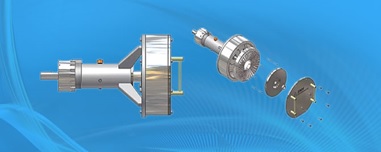Bitumen emulsion – is a dispersion of small droplets of bitumen in water.
Bitumen emulsion consists of three basic ingredients; bitumen, water and an emulsifying agent. Based on specifications it may contain other additives, such as stabilizers, coating improvers, antistripping or break control additives. It is well known that water and bitumen will not mix, except under carefully controlled conditions, using highly specialized equipment and chemical additives.
The bitumen content can be varied to suit different requirements and is typically between 30% and 70%.
Bitumen emulsions are divided into two categories:
• Anionic – with negatively charged globules;
• Cationic – with positively charged globules.
The main grades for cationic bitumen emulsions are classified as follows:
• Rapid setting. Designed to react quickly with aggregate and revert from the emulsion to the bitumen. Primarily used for spray applications, like surface dressing.
• Medium setting. Formulated not to break immediately upon contact with aggregate and will remain workable for a few minutes to several months depending on formulation and application (tack coat, production of stockable asphalt mixes and etc.
• Slow setting. Designed for mixing stability . Primarily used with high fine content aggregates. Very often used in Cold recyckling technology.
Production of bitumen emulsions
 Bitumen emulsions are usually made using a colloid mill, although other dispersion devices are possible, too. In the colloid mill energy is applied to the system by passing the mixture of hot bitumen and water phase between a rotating rotor and stator.
Bitumen emulsions are usually made using a colloid mill, although other dispersion devices are possible, too. In the colloid mill energy is applied to the system by passing the mixture of hot bitumen and water phase between a rotating rotor and stator.
Bitumen emulsions can be produced either in a batch or an in-line process plant.
The batch type
the batch process involves at least two process steps: water phase (soap), bitumen preparation and the actual emulsion production.
The in-line type
In the in-line process the water heating and all material dosing are done continuously using individual dosage pumps for each material. No batch tanks are used. Instead, the water phase system must further be designed to provide sufficient reaction time for the chemicals so that adequate neutralization and solution take place before the water phase meets the bitumen.

Components of the bitumen emulsion
Bitumen
The binder type used in emulsions is usually bitumen 160/220 penetration, however specialised applications may require the use of polymer and other additives to enhance the emulsion and binder performance. For production of polymer modified bitumen emulsions, SBS modified bitumen can be used, too.
Calcium chloride
Calcium chloride or other soluble salts are often included in the water phase of cationic emulsions at level of 0,05 – 0,1%. Calcium chloride helps to reduce the osmosis of water into the bitumen and the increase in viscosity during storage. Calcium chloride can also reduce the settlement of emulsions by increasing the water phase density and in some cases improves the performance of emulsifiers.
Additives to improve bitumen adhesion to aggregate
Water resistance is an important property of mixes and seals. Often bitumen emulsions may not have sufficient adhesion on aggregates, in which case adhesion promoters can be added to the bitumen before emulsification or to the finished emulsion. The type of adhesion promoter to be used depends on chemical nature of the aggregate (alkaline or acidic) and type of bitumen used in emulsion production.
Emulsifiers
The interfacial area between the liquid phases is greatly increased in bitumen emulsion. The choice of emulsifier and emulsifier concentration affects the particle size. Many cationic emulsifiers are supplied in a water – insoluble neutral form and need to be neutralized with an acid like hydrochloric, phosphoric, acetic or sulfuric before the cationic form is generated.
A large variety of available cationic emulsifiers are suitable for emulsification of bitumen. The most common is of the general type “fatty diamine”. In these emulsifiers the hydrocarbon part originates from fatty acids where the acid part has been replaced by some type of diamine or polyamine. The alkyl part commonly originates from fatty acids from tallow, which are more or less hydrogenated to increase their stability.
Latex
Polymer modification can improve the properties of bitumen in terms of cohesion, resistance to cracking at low temperatures and resistance to flow at high temperatures. Latex can be incorporated either in the water or bitumen phase or even post-added to the bitumen emulsion.
Thickeners
Water soluble thickeners can increase emulsion viscosity, helping to meed national standards or to reduce emulsion run-off in open graded mixes. They can be added to the water phase or to the finished emulsion typically at levels of 0.02 – 0.20 % from emulsion quantity.